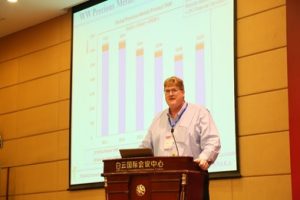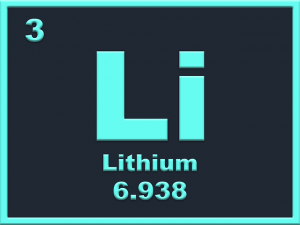Gold is Not the Only Precious Metal – Matt Watson’s pick of metal investments for the next decade includes some less well-known choices with enormous upside potential…
 Bullion.Directory precious metals news 12 January, 2021
Bullion.Directory precious metals news 12 January, 2021
By Spencer Campbell
Founder / CEO at SE Asia Consulting
 Today I speak with Matt Watson, the Founder and Principal of Precious Metals Commodity Management LLC, based near California’s Silicon Valley.
Today I speak with Matt Watson, the Founder and Principal of Precious Metals Commodity Management LLC, based near California’s Silicon Valley.
Specializing in precious metals market research, hedging strategies, thrifting strategies, trading support, and overall risk management, Matt’s extensive experience in the Precious Metals Commodity markets helps clients make better decision, reduce costs, drive thrifting activities, improve trading performance, reduce risks, create and implement hedging strategies.
Matt’s clients range from mining entities, investors, industrial precious metals users, processors, and recyclers.
My ongoing mantra is that this will be the century of clean energy and mineral constraints.
1. Matt lets dig in and start from how you got into the precious metals business around 20 years ago
I started my career as an industrial statistician, teaching over 800 Engineers design of experiments and statistical methods, and consulting with those students from a broad range of industries.
Interestingly I won an award for the best global application of the Taguchi DOE Method in 1989 on a gold plating 96-pin connector project in England. After that I quickly became a yield and process improvement hired gun.
After helping with the turnaround of a few hard disc drive substrate factories resolving persistent yield issues, I found myself working at Seagate on a series of precious metals PVD sputter target improvement projects. One day they moved me into the Commodity Management Global Materials Team and handed me responsibility for $540 million dollars’ worth of Platinum and Ruthenium products, along with sourcing and purchasing responsibilities.
 I was one of the precious metal’s industrial user big fish customers for several years.
I was one of the precious metal’s industrial user big fish customers for several years.
I then moved on to a Solar PV start up consuming larger Silver paste, Ruthenium PVD and other critical metals. From there I joined Tanaka as the head of their business development activities in the America’s for 4.5 years. And from there now I have launched my own consulting practice.
Once the precious metals bug bit me, I’ve been hooked ever since. I now also support both the International Precious Metals Institute and the Silver Institute on projects.
2. Starting in a corporate function sourcing of precious metals what changes have you witnessed over time in terms of responsible sourcing changes over time?
Great question. Clearly responsible sourcing in the Electronics Markets leads you to a number of compliance issues, including Conflict Minerals.
Over time of course we have seen the magnitude and complexity of those compliance requirements grown leading into blockchain and other compliance practices. Responsible Artisanal Mining still needs more work in a number of regions globally.
I think the segment of the precious metals markets that have changed the most in terms of responsible sourcing are the recycle and refine markets, especially in the areas of Jewelry and auto catalysts. All of the practices and terms surrounding recycle have become more transparent, and corrupt practices and business dealings have been dramatically reduced.
Of course, recent changes in the banking and financing sector have essentially helped the larger publicly traded recyclers gain more clout, while many of the privately held independent operators struggle to secure financing services.
 Recently my clients have led me into the lithium battery mineral space, where responsible mining is questionable at best.
Recently my clients have led me into the lithium battery mineral space, where responsible mining is questionable at best.
I’ve been preaching about the dumping of nickel mine tailings directly into the Indian Ocean.
Nickel mines in Papua New Guinea and Indonesia in order to reduce mining operations have lowered costs by fouling one of the most sensitive ocean regions on the planet called the Coral Triangle. Of course today 65-70% of the global cobalt comes from the DRC, where cobalt is not treated as a conflict mineral.
Human rights abuses in the DRC including child labor and militias controlling artisanal mining are still a significant issue that needs more attention.
3. Given the regulatory push in responsible sourcing and the ESG buzzwords being pushed across assets do you envisage this will have an overall impact on global pricing across the precious metals space?
No doubt it already has. Again, in the recycle and refine space for auto catalyst for example, has seen Banking and financial institutions tighten their compliance requirements significantly, and frankly refusing to work with privately held independent operators, pushing larger publicly traded recyclers into much stronger position when it comes to setting terms with scrap collectors.
 We recently witnessed the industry recoil from Peruvian money laundering schemes, taking down entire US organizations along with it. We have also seen a major silver and gold refiner in Miami go down after inventories simply did not add up. Financiers and customers across the US paid dearly for yet another default.
We recently witnessed the industry recoil from Peruvian money laundering schemes, taking down entire US organizations along with it. We have also seen a major silver and gold refiner in Miami go down after inventories simply did not add up. Financiers and customers across the US paid dearly for yet another default.
The net of market disruptions like these again assists the well-established larger publicly traded processors and refiners, putting the independents in a tougher and often thinner margin operating space.
4. Silver had a stellar year in 2020 but to me the Platinum Group Metals to the market by storm, can you give us your thoughts around Platinum, Palladium and Rhodium for the year ahead in 2021?
Silver is still going to keep rocking. Working through the Silver Institute, I presented a paper at a Chinese conference this year where I highlighted that industrial silver demand today at 61% will grow to 67% by 2025, and keep climbing from there.
 Consider 10% of the global supply of silver, recycle plus mined supply, goes into Solar PV. This year globally we made some 115 GW of new Solar PV installations.
Consider 10% of the global supply of silver, recycle plus mined supply, goes into Solar PV. This year globally we made some 115 GW of new Solar PV installations.
Those installations will double by 2025. With design thrifting I project silver solar PV demand will grow to 14-15% by 2025.
But wait, many clean energy advocates foresee a state by 2040-50 timeframe where 3-4 TW (terawatt) or 36x today’s market. Where will that silver come from? Silver is used as it is the worlds most conductive mineral. Copper is second. Using copper on solar cells and modules would result in a 20% electrical efficiency loss, and the expected module lifetime would reduce from 25-years down to 10-15 years.
That’s why they use the silver.
I agree with you on the PGM’s. Rhodium is off the charts setting records weekly now, and that trend will continue. Rhodium is key NOx emissions. The most likely design shift will be to use 6:1 Palladium to augment the Rhodium loadings in auto catalyst.
Given Rhodium mining is tapped out, and actually declining over the next 2 decades, this design shift will come.
Palladium will see continued strong demand through 2030. Eventually increased auto catalyst recycle and expanded N. American, Russian, Zimbabwe, and S. African Northern Limb mining will push Palladium from its current structural deficit into a structural surplus. I argue this is still over a decade off.
China 6A, Euro 7, and tighter US standards will keep the pressure on Palladium.
Platinum is the metal of the hydrogen economy.
 Today’s PEM based fuel cell loadings are over 30x higher in fuel cells than auto catalyst. Even with further design thrifting, FCEV’s and other aspects of the hydrogen economy will put Platinum into an eternal structural deficit.
Today’s PEM based fuel cell loadings are over 30x higher in fuel cells than auto catalyst. Even with further design thrifting, FCEV’s and other aspects of the hydrogen economy will put Platinum into an eternal structural deficit.
There is literally no hope of significant additional mining to help ease that market on the horizon.
I presented on Iridium and Ruthenium at this year’s IPMI Annual conference. I predicted Iridium’s climb. Continued electronics demand including 5G and LED, along with a new set of demand coming from PEM Green Hydrogen Electrolyzer plants will keep this metal climbing as well. 2020 COVID impacts on S. African mining, and the Anglo ACP plant failures of course added to supply disruptions.
Ruthenium will hold flat for another year before some additional electronics demands put pressure on that minor metal.
PGMs are indeed scarce.
5. South Africa the major supplier of Platinum and Palladium have been suffering over the last few years with power outages and more recently Covid shut downs, where do you see growth in output of Platinum Group of Metals globally to take up some of this slack?
Several new clients of mine are PGM Mining investors. There are a couple of large palladium rich deposits that are very shallow in the S. African Northern Limb and neighboring Zimbabwe to the north.
 Norilsk in Siberia is of course adding processing capacity as well, which will bring more Palladium and Platinum to market. And then there is the Montana Sibanye-Stillwater Blitz project, and expansion of mining there which will again help on Palladium.
Norilsk in Siberia is of course adding processing capacity as well, which will bring more Palladium and Platinum to market. And then there is the Montana Sibanye-Stillwater Blitz project, and expansion of mining there which will again help on Palladium.
Finally, there are some Ontario Canada mines that will come online including the Marathon Palladium project.
The common thread with all of these is that they are on the lower end of the cost-curve for mined palladium, and some platinum. Little is added to the PGM minors including Rhodium, Ruthenium and Iridium.
On the recycle front, auto catalyst Platinum and Rhodium returns will be fairly flat, although the palladium returns from gas vehicles already on the road will more than double over the next decade.
This weight is baked into the cake already so to speak. We are simply waiting for the older vehicles to go end of life to harvest their weight.
6. With Precious Metals being deployed across technology and clean energy products do you see these being the main drivers of price momentum or are we going to see an increase in investment products tying up metals for industrial use?
Absolutely…

- Palladium, Platinum, and Rhodium in auto catalysts whose ICE vehicle demand will peak until around 2032. Tighter emission specification coupled with new real world test conditions has exploded the loadings per vehicle.
- Platinum in FCEV’s PEM Fuel Cells. Platinum is the only usable catalyst material in this space. Best in class platinum loadings are 30x higher than auto catalyst.
- Iridium and Platinum in PEM Electrolyzer for green hydrogen production. Iridium market is already extremely thin and spoken for, now comes more incremental demand for green hydrogen.
- Ruthenium is used in Direct Methanol Fuel Cells. Not a big demand yet, but commercialization is just getting underway.
- A little platinum is used in Alkaline+ Electrolyzer for green hydrogen production.
- Large stationary fuel cells that burn hydrogen to generate energy to balance the power grid use Platinum.
- Ruthenium is used as a catalyst for Ammonia and Fertilizer, a key source of dense hydrogen. Look for this demand to accelerate over time.
- Liquid Organic Hydrogen Carrier (LOHC) supply chain loop typically uses Ruthenium, Palladium and Platinum
- Palladium foils used as hydrogen permeable films are great for ensuring hydrogen purity.
- Silver is essential for Solar PV. 10% of the global silver supply goes into solar.
- Small amounts of Platinum is the key enabler for Fiberglass Wind Turbine production. Wind turbines and their blades are only getting larger and larger over time.
- Ruthenium’s use in electrochromic (or smart) glass will see industrial demands grow as attention of building CO2 emissions and power management takes off.
- I’ll even throw in Copper. 75% of copper is used in wires for all industries and energy distribution. This includes 55 pound of copper wiring used per gasoline passenger vehicle, 110 pounds in a typical Hybrid Electric Vehicles, and 165 pounds per full BEV. Add in Wind Turbines where an average utility scale wind turbine generates 1.76 MW today and uses 6.3 mt/Copper.
- Scandium use for strong aluminum used in vehicle light-weighting.
- And then electronics in general. EV’s use lots more electronics consuming Gold, Silver, Palladium, Iridium and Ruthenium.
- Passive components like high-temperature MLCC’s using silver and palladium are in high demand as EV’s and 5G networks/devices grow.
- The list is long, but there are even more I could list.
7. By country which countries are the biggest physical buyers of Platinum Group of Metals?

- China, China, then China
- Europe
- USA/North America
- Japan and the rest of Asia
8. What capacity do the worlds refineries have in terms of Platinum Group of Metals?
The last analysis I did on global PGM’s was back in 2018. Then I came up with global recycle capacity of 214 mt of PGM refine capacity.
The breakdown then was ~45 mt of Platinum, ~93 mt of Palladium, ~11 mt of Rhodium, ~62 mt of Ruthenium (which is about 2.8x the annual mined Ru FYI, the highest ratio of any PGM), and 2-3 mt of Iridium.
Going forward for recycle, more aggregate capacity will be needed globally for auto catalyst and fuel cells. Auto catalyst outturns are around 2.6 Moz of palladium annual, but this will grow to 6 Moz by 2023, and then higher beyond.
9. The Platinum Group of Metals seem to have cemented themselves firmly in medical, energy, clean energy tech and finance but as we all know the total global volume available is limited, what metals are you seeing coming into play for future development that you think people can look at for early investment?
I help a group of investors manage some of their funds. We netted over 44% gains in the last 2 quarters of 2020 after setting this fund up.
My recommendation to them, to you, and the strategy I follow on my own personal investments is invest in mining, ETF’s, and precious metals processors surrounding these metals that are being strained by clean energy initiatives.
Specifically, my list of constrained metals includes all PGM’s (Pt, Pd, Rh, Ru, Ir, Os), Silver, Gold, Copper, Nickel, Lithium, Scandium, Vanadium, and some of the RRE’s.
10. For anyone wanting to connect with you – where can they find you online?
- My website is https://www.preciousmetalscommoditymanagement.com/
- Email: MattWatson@preciousmetalscommoditymanagement.com
- LinkedIn Matt Watson
- Kitco https://www.kitco.com/contributors/mattwatson/
Spencer Campbell


Spencer Campbell is a Director at SE Asia Consulting Pte Ltd, and provides key advisory services across the Mining and Precious Metal Refining Sectors, working with a number of leading gold refiners and processors.
This article was originally published here











 Material provided on the Bullion.Directory website is strictly for informational purposes only. The content is developed from sources believed to be providing accurate information. No information on this website is intended as investment, tax or legal advice and must not be relied upon as such. Please consult legal or tax professionals for specific information regarding your individual situation. Precious metals carry risk and investors requiring advice should always consult a properly qualified advisor. Bullion.Directory, it's staff or affiliates do not accept any liability for loss, damages, or loss of profit resulting from readers investment decisions.
Material provided on the Bullion.Directory website is strictly for informational purposes only. The content is developed from sources believed to be providing accurate information. No information on this website is intended as investment, tax or legal advice and must not be relied upon as such. Please consult legal or tax professionals for specific information regarding your individual situation. Precious metals carry risk and investors requiring advice should always consult a properly qualified advisor. Bullion.Directory, it's staff or affiliates do not accept any liability for loss, damages, or loss of profit resulting from readers investment decisions.

Leave a Reply